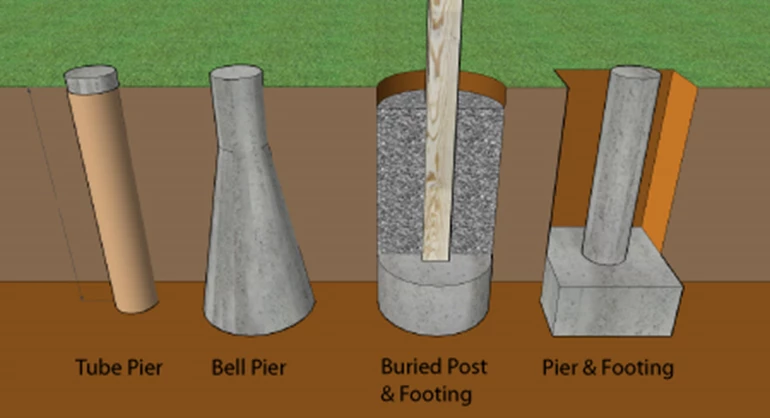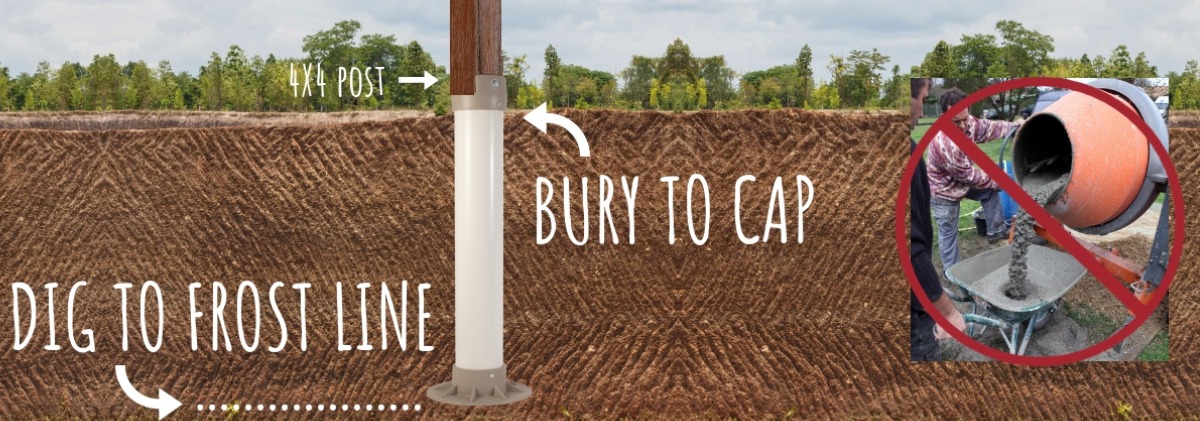Deck Footings Demystified: Your Plan for a Safe, Durable Outdoor Place
Deck Footings Demystified: Your Plan for a Safe, Durable Outdoor Place
Blog Article
Choosing the Right Deck Footings for Stability and Resilience
When it concerns building a deck, among the most vital decisions you will certainly make is selecting the right grounds for security and toughness. The long life and safety of your deck depend greatly on the type of footings you pick, as they supply the important assistance and stability to hold up against the test of time. With a myriad of options offered, it can be overwhelming to figure out which footings are best fit for your details requirements. In this discussion, we will certainly explore the different kinds of deck grounds, consider the vital elements to consider when making a decision, and look into the benefits and drawbacks of various options. By the end, you will have a more clear understanding of the choices handy and be better furnished to make an informed decision for your deck task.
Sorts Of Deck Grounds
There are numerous sorts of deck grounds that can be used, each offering distinct benefits and factors to consider. One usual kind of footing is the concrete pier footing. These grounds are composed of a round opening full of concrete, which provides a solid foundation for the deck articles. Concrete pier grounds are fairly simple to mount and offer outstanding stability, making them a prominent option for numerous deck projects.
These grounds are set up by screwing them into the ground, which develops a safe foundation for the deck. They also permit for simple adjustment and progressing of the deck if needed.
Alternatively, some home builders select precast concrete footings. These grounds are made of sturdy concrete and be available in different shapes and sizes to accommodate different deck designs. Precast concrete footings are convenient to mount and offer a secure base for the deck structure.
Lastly, one more alternative is the post-in-anchor ground system. This kind of ground involves driving a metal support into the ground and connecting it to the deck post. It uses flexibility in regards to positioning the deck articles and appropriates for decks with lightweight frameworks.
When selecting the best kind of deck ground, it is important to think about variables such as dirt problems, deck tons, and local structure codes (Deck Footings). Consulting with a professional specialist or architectural engineer can assist ensure the ideal footing is chosen for a risk-free and secure deck
Elements to Take Into Consideration When Choosing Footings
When choosing the proper grounds for a deck, it is vital to thoroughly think about numerous variables such as soil conditions, deck load, and adherence to neighborhood structure codes. These elements play a significant duty in ensuring the security and toughness of the deck framework.
The type of soil on which the deck will be developed figures out the type of footings called for. On the various other hand, decks developed on clay or extensive soils might need footings that can accommodate the dirt's tendency to broaden and contract.
An additional vital variable is the deck tons. The weight of the deck, including the products utilized and any potential real-time tons such as furniture or celebrations, need to be thought about when selecting grounds. The footings have to be created to bear the weight of the deck and disperse it uniformly to stop any architectural issues or failures.
Finally, adherence to regional building codes is extremely important. Building ordinance vary from region to area, and it is vital to follow the specific needs set by the neighborhood authorities. Deck Footings. These codes make sure that the deck is built securely and meets the needed standards for structural honesty and load-bearing capacity
Concrete Grounds: Advantages And Disadvantages

Concrete grounds offer several benefits and downsides when used as the foundation for a deck. On the silver lining, concrete footings offer exceptional security and durability. Concrete is a inflexible and their website solid material that can support heavy tons and withstand various weather. It additionally has a long lifespan, making it a reputable choice for long-lasting use.
Another advantage of concrete footings is their versatility. They can be put right into different sizes and shapes to accommodate various deck layouts and arrangements. Concrete grounds can be personalized to fit the certain requirements and demands of the deck structure.
However, there are additionally some disadvantages to using concrete footings. One major disadvantage is the price and labor entailed in their setup. Concrete footings call for excavation and usually require the help of heavy equipment. This can boost the general expense of the deck project and might need professional aid.

Helical Piers Vs. Sonotubes: Which Is Much better?
In taking into have a peek at these guys consideration the structure choices for a deck, the comparison between helical piers and sonotubes is vital in determining the premium selection. They are twisted into the ground making use of hydraulic equipment, providing a steady and durable foundation for the deck.
The helical plates on the piers develop a strong grip with the dirt, preventing any kind of movement or changing of the deck. Sonotubes, on the various other hand, rely only on the concrete filling for security, which may not provide the very same level of strength and resistance.
In regards to installation, helical piers are reasonably much easier and faster to mount compared to sonotubes. The hydraulic machinery made use of to twist the piers into the ground makes certain a reliable and quick process. Sonotubes, on the various other hand, call for digging openings and pouring concrete, which can be labor-intensive and lengthy.
In addition, helical piers useful site are an even more functional option. If needed, they can be utilized in different dirt conditions and can be adjusted or strengthened. Sonotubes, on the various other hand, might call for additional support, such as rebar, in specific dirt problems or locations with high lots requirements.
Selecting the Right Footings for Your Deck's Dimensions
For ideal structural stability, it is vital to very carefully pick the ideal footings that align with the dimensions of your deck. The dimensions of your deck, including its length, width, and elevation, play a considerable function in figuring out the kind and dimension of grounds needed.
When choosing footings for your deck, it is necessary to think about the load-bearing capacity of the dirt. The weight of the deck, integrated with the weight of any type of furniture or people on it, exerts a significant force on the grounds (Deck Footings). For that reason, it is important to select footings that can sufficiently sustain this weight without sinking or shifting with time.
Larger decks with better dimensions call for larger grounds to supply adequate security and support. The form of the footings, whether they are square or round, depends on the style and layout of the deck.
Verdict
To conclude, picking the best deck grounds is vital for guaranteeing stability and longevity. Aspects such as the kind of footings, the deck's measurements, and the pros and cons of different options ought to be taken into consideration. Concrete footings use strength and durability, yet might be much more pricey and time-consuming to mount. Helical piers and sonotubes have their own advantages and disadvantages. Ultimately, selecting the ideal footings for your deck's specific needs is important for a lasting and effective structure.
These footings consist of a cylindrical hole filled with concrete, which provides a solid foundation for the deck posts. Concrete pier footings are relatively simple to install and offer excellent stability, making them a popular option for numerous deck tasks.
Precast concrete footings are practical to set up and offer a secure base for the deck framework.
It uses adaptability in terms of positioning the deck messages and is ideal for decks with lightweight frameworks.
Concrete footings use numerous benefits and negative aspects when made use of as the structure for a deck.
Report this page